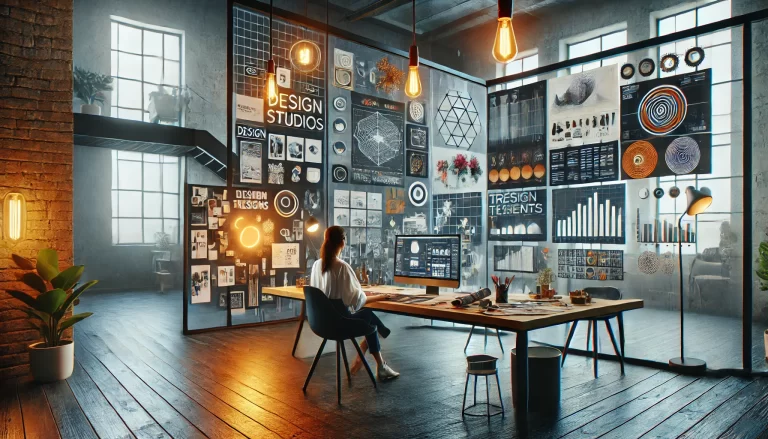How to Transition from Student to Professional Designer: Expert Tips

Transitioning from a student to a professional designer is an exciting yet challenging journey. The design industry is highly competitive, and making a smooth shift from academic projects to real-world work requires strategic planning, skill enhancement, and adaptability. Whether you’re an aspiring graphic designer, interior designer, or architect, here are expert tips to help you transition successfully.
1. Build a Strong Portfolio
Your portfolio is your most powerful tool when entering the professional design world. Employers and clients want to see your skills in action, and a well-curated portfolio can make all the difference.
Tips for a Winning Portfolio:
• Include your best work, showcasing a variety of projects.
• Highlight problem-solving and creative thinking.
• Use high-quality images and professional layouts.
• Provide descriptions explaining the thought process behind each project.
• Keep it updated with new and relevant work.
• Have both a digital and physical version for different situations.
2. Gain Real-World Experience
While theoretical knowledge is important, practical experience sets you apart. Engage in internships, freelance work, or personal projects to gain hands-on experience.
How to Gain Experience:
• Apply for internships at design firms or studios.
• Offer pro bono work for NGOs or small businesses.
• Take on freelance projects to build credibility.
• Collaborate with peers on real-world projects.
• Enter design competitions to challenge your skills and gain recognition.
3. Develop Business and Soft Skills
Being a professional designer is not just about creativity; you also need business acumen and interpersonal skills to thrive.
Key Skills to Develop:
• Communication Skills: Learn how to present your ideas effectively.
• Client Management: Understand client needs and how to meet expectations.
• Negotiation Skills: Learn how to price your services and secure fair deals.
• Time Management: Work on meeting deadlines without compromising quality.
• Networking: Connect with industry professionals to open up opportunities.
4. Stay Updated with Industry Trends
The design industry is constantly evolving, and staying ahead requires continuous learning.
Ways to Stay Updated:
• Follow design blogs, magazines, and influencers.
• Attend industry events, webinars, and workshops.
• Experiment with new design tools and software.
• Engage with online design communities and forums.
• Take additional courses or certifications in emerging design technologies.
5. Create a Personal Brand
In a competitive industry, having a strong personal brand can help you stand out.
Steps to Build Your Brand:
• Develop a unique design style and voice.
• Maintain a professional online presence through social media and a personal website.
• Share your work and insights through blogs, case studies, or video content.
• Engage with the design community by participating in discussions and mentorship programs.
• Be consistent in your messaging, aesthetics, and professional interactions.
6. Use the Right Tools and Software
Technical proficiency is a must in the design world. Mastering industry-standard software can make you more employable and efficient.
Essential Design Tools:
• Graphic Design: Adobe Photoshop, Illustrator, InDesign, Figma
• Interior Design: AutoCAD, SketchUp, 3ds Max, Revit
• Architecture: Rhino, ArchiCAD, Lumion, Grasshopper
• UI/UX Design: Adobe XD, Figma, Sketch
Investing time in learning these tools can significantly enhance your capabilities.
7. Find the Right Job or Clients
Landing your first job or freelance gig is a significant milestone. Here’s how to do it effectively.
Job Search Tips:
• Customize your resume and portfolio for each application.
• Use platforms like LinkedIn, Behance, and Dribbble to showcase your work.
• Reach out to professionals and seek informational interviews.
• Apply to companies that align with your design interests.
• Be persistent and patient in your job search.
Tips for Freelancers:
• Create a professional website or portfolio on platforms like Behance.
• Use freelance marketplaces like Upwork, Fiverr, or Toptal.
• Network with potential clients through social media and design communities.
• Set clear terms for your services, contracts, and pricing.
8. Learn to Handle Criticism and Feedback
As a professional designer, you will receive critiques on your work. Learning how to accept and apply constructive feedback is crucial.
How to Handle Feedback:
• Keep an open mind and don’t take criticism personally.
• Ask clarifying questions to understand the feedback better.
• Use feedback as a learning opportunity to improve your work.
• Balance staying true to your design vision while meeting client expectations.
9. Master the Art of Self-Promotion
Even the most talented designers need to market themselves to get noticed.
Effective Self-Promotion Strategies:
• Actively post on social media, sharing work-in-progress and final projects.
• Write blog posts or create video content about design insights.
• Engage with design communities through discussions and collaborations.
• Participate in design competitions and showcase your achievements.
• Keep your LinkedIn and other professional profiles updated.
10. Keep Learning and Growing
The best designers never stop learning. Whether it’s a new design trend, a software update, or an innovative technique, staying curious and adaptable is key to long-term success.
Ways to Keep Growing:
• Take advanced courses in design and related fields.
• Read books by industry experts.
• Attend design conferences and networking events.
• Seek mentorship from experienced designers.
• Keep experimenting with different design styles and approaches.
Final Thoughts
Transitioning from a student to a professional designer is a journey that requires patience, perseverance, and strategic action. By building a strong portfolio, gaining experience, staying updated with industry trends, and continuously improving your skills, you can successfully navigate this transition and establish yourself as a professional designer. Remember, consistency and passion are key—keep designing, keep learning, and keep pushing your creative boundaries!






